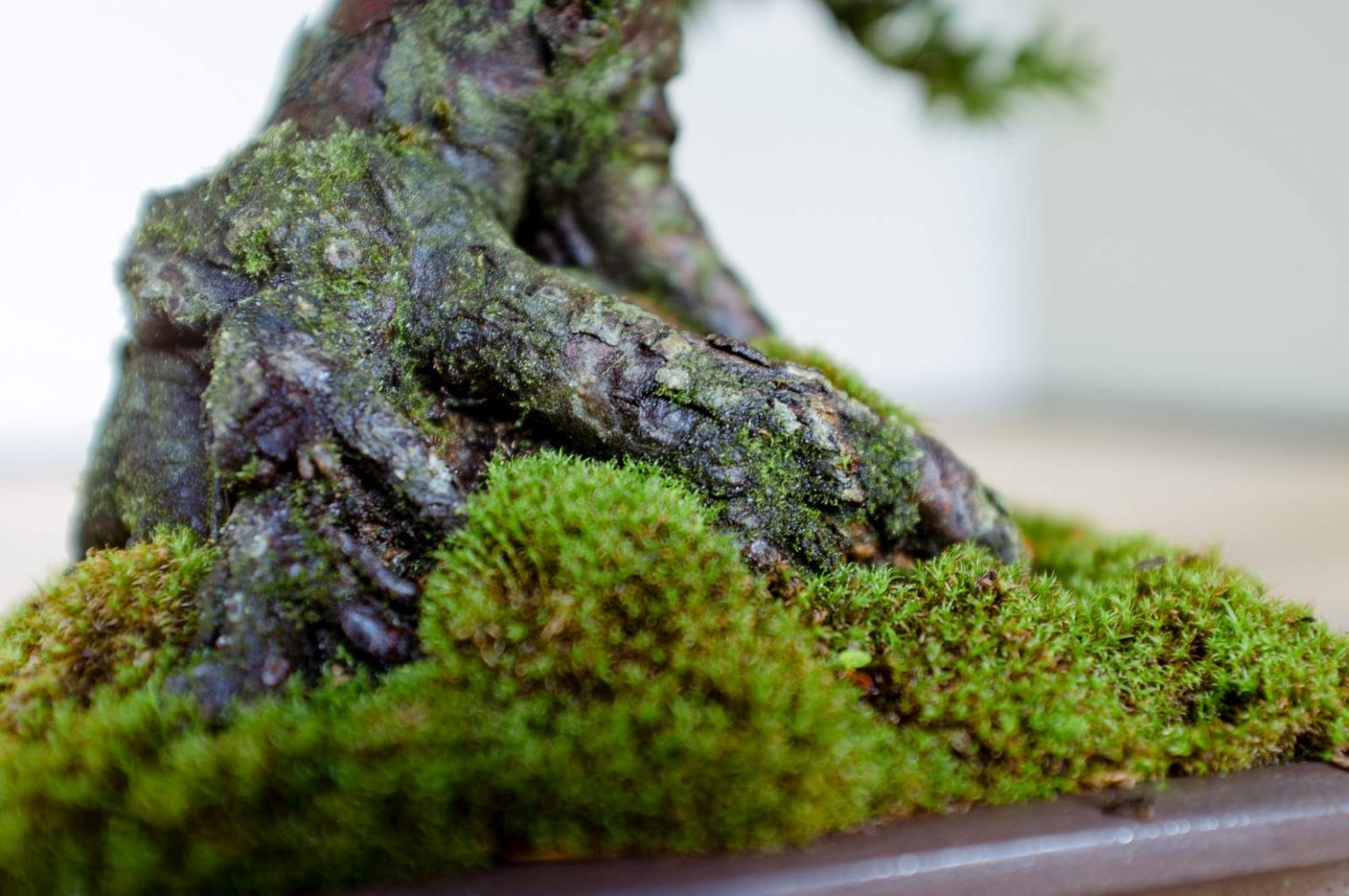Case story: Yew
Yew - taxus baccata
Yew - Taxus baccata
Back in 2006 I bought a garden nursery stock. A raw material prepared to be planted in a garden.
What I always do look out for when I search for new raw material, is the quality of the trunk. First and foremost.
Next is the ability to make the changes I want over time.
It is therefore a necessity to know the plant or tree I am going to work on. Every tree has different demands to their optimal growth, but as important it is to know how they react to pruning and wiring.
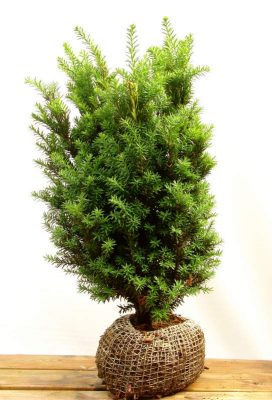
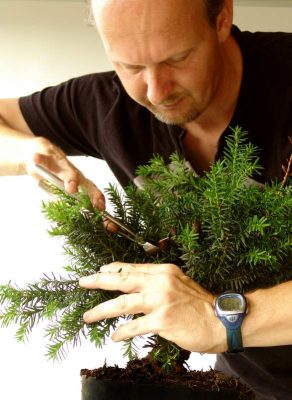
The initial work is about cutting the tree back in size. This tree was reduced from about 1,70 cm to 25 cm in the start. Later reduced further.
Yew tolerate heavy pruning, but it is important to have some green left. In some cases a Yew will set new growth from bare wood without any green left, but it is not predictable.
This method, cutting back a large tree or shrub has the advantage that there already has been grown athick trunk. The only way to grwo thick trunks is expanded growth of branches and roots. This will not happen in a bonsai pot, because the size limits the growth. Both roots and branches needs to grow long to thicken up.
The European Yew is extremely hard wooded. Therefore it is important to use sharp cutters, and be aware that only younger branches are possible to wire and bend in position.
Wounds do not heal over like on softwood deciduous trees, and therefore cuts have to be more or less hidden behind foliage or worked so they do blend in as natural decayed parts.
Part of it can be done by carving, and the rest will be developed when time passes and age becomes present.
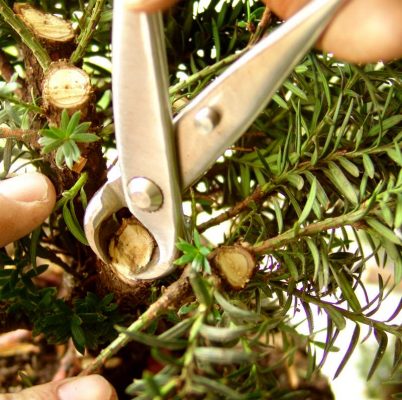
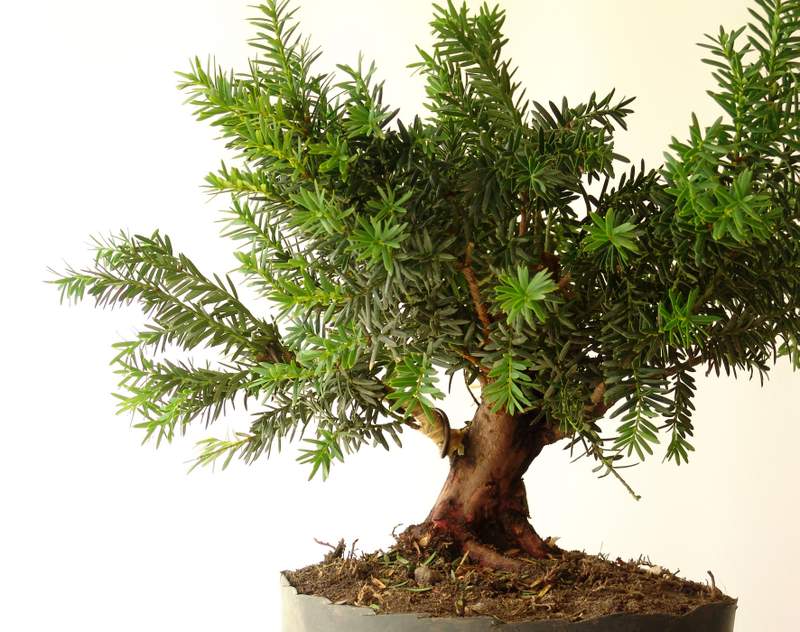
Reducing the size of a tree as drastically as done in this example, is only done in steps. Not all at once. There is no exact formula that describes how much. It is a matter of experience and knowing each tree.
First and foremost the tree must be in very good health and growing well. If not, a drastic pruning or wiring, will set the tree back in development and you will lose what you thought you gained by a too early and too brutal action.
First all unnecessary growth was removed, but leaving more than needed in the end. This to have enough to select from when beginning the finer styling, and to ensure a healthy tree.
The more leaves, the more active photosynthesis, the more growth. A win win win situation.
A method of getting new growth at branches, back budding, is by removing older needles.
Older needles are recognized by being harder than the new soft green needles and darker green.
Pulling them off in the growing direction will trigger new buds after some time. Do not pull back against the growing direction, because it will tear off the tin tissue and the branch may die back by drying out.
This action is best performed (Northern Europe) around June-August.
Only done on trees in good growth.
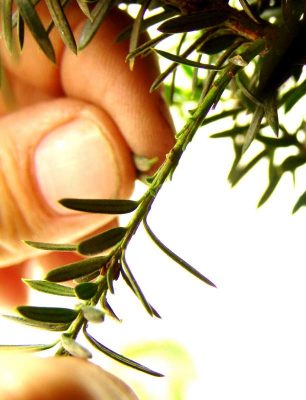
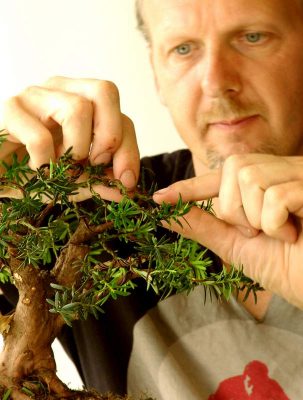
Wiring a tree at this early stage demands it is not repotted or transplanted. Therefore the tree was repotted a year before, only reducing roots by half, and not any unnecessary root prunings was done. As much roots as possible are needed for good growth. Roots can be reduced over time at the next repotting.
As stated, wiring older branches is impossible. The extremely hard wood is not bendable. So it is younger branches you can adjust with wire.
Be careful when bending yew branches. The living tissue is very thin and is easily broken underneath the also thin layer of bark.
There is a risk of small branches dying back if not bend in position gently. Avoid repositioning. Bending from one direction to another may cause damage and drying out. So before bending, be sure where to go, and do it once.
Young tree and a younger artist (hair lost already though).
First initial styling is performed. At this stage the tree is too large, and will be reduced further later on.
The reason not to cut it back closer to the final size at this time, is to secure the health.The tree needs the energy it can get from a fair amount of leaves and roots.
Opening up the branches at this time is also helping light to reach the inner parts, so new growth will be able to develop.
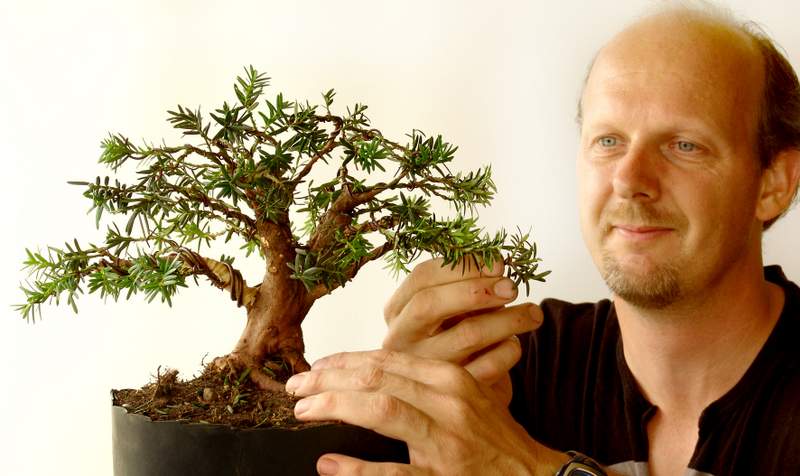
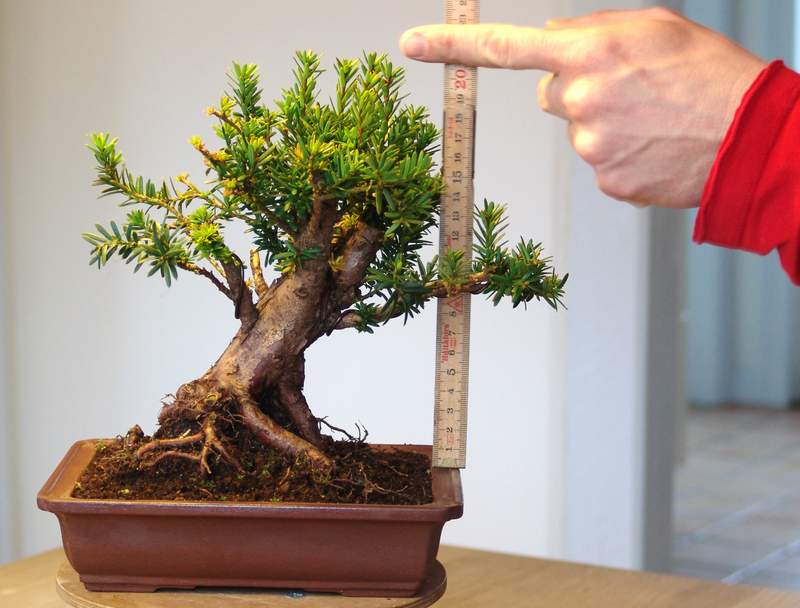
21 cm is the height in 2008. A cut back has been made to force new growth further back.
It is important to do this, to develop a fine branch structure from the basic. This will make the basic structure for the finer growth.
If neglected, it will be difficult to restructure the tree at a later point when this is needed.
A this time the Yew is in a training pot. What is a training pot you may ask? It is just a pot that is not the finer exhibition standard pot that is the end goal. It can be a wooden box or a plastic version. Often a too large pot, because the extra root growth is needed in the periods where growth is the key point.
2009
Three years after the first styling, the tree has grown well, and has been repotted to a smaller pot.
Yew have a very fine root system, and it is therefore fairly easy to reduce the amount of roots without risking to harm the finer roots that takes up water. Other species will have a different root structure, where it is important to reduce roots much more slowly.
The Yew has reacted well and has been manured well to enhance growth.
At his time focus is on growth. Later it will be on reducing growth when a satisfying level is reached.
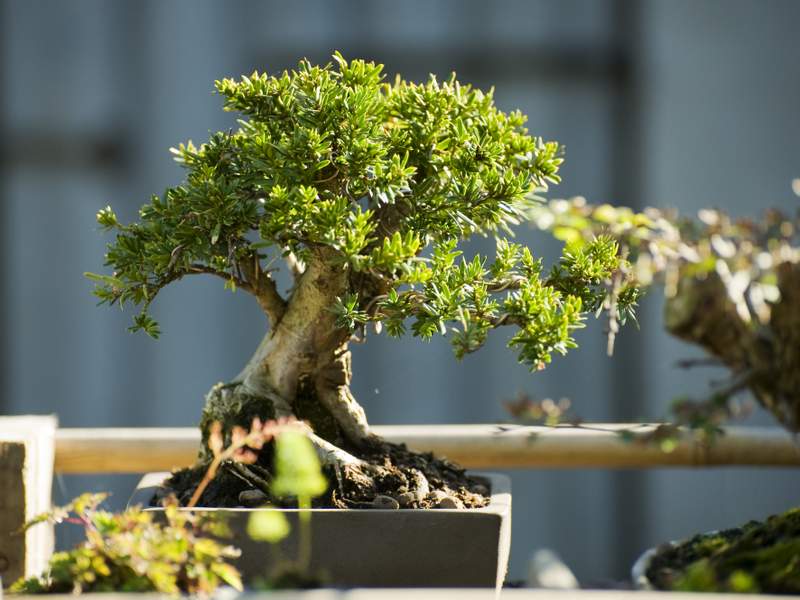
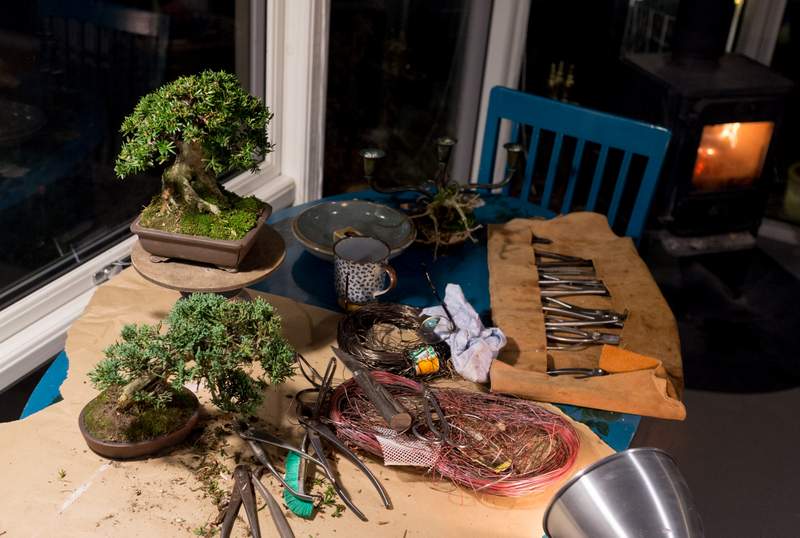
2016
A bonsai is never finished. It is always in some development mode. It might be possible to keep it at a certain stage for a few years, but adjustments will be part of an ongoing procedure.
A top view of the Yew. Here it is visible how the canopy have developed well.
Trimming growth in spring to keep the size and increase the ramification will step up the image to a higher level with time.
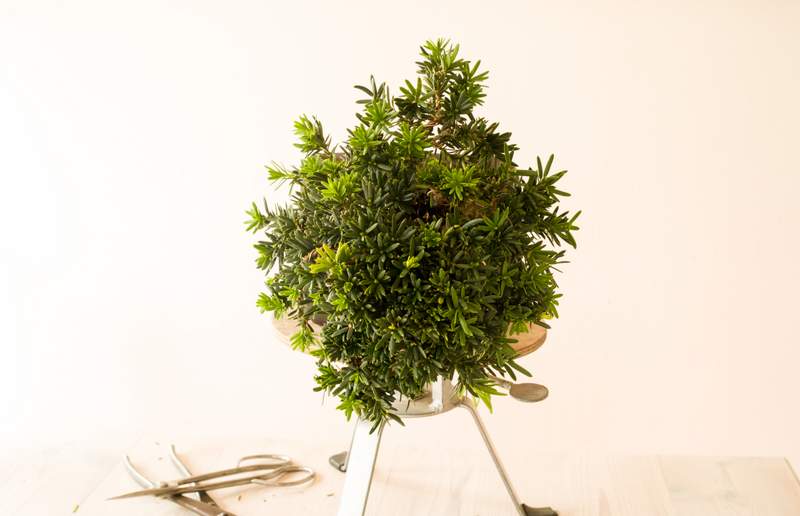
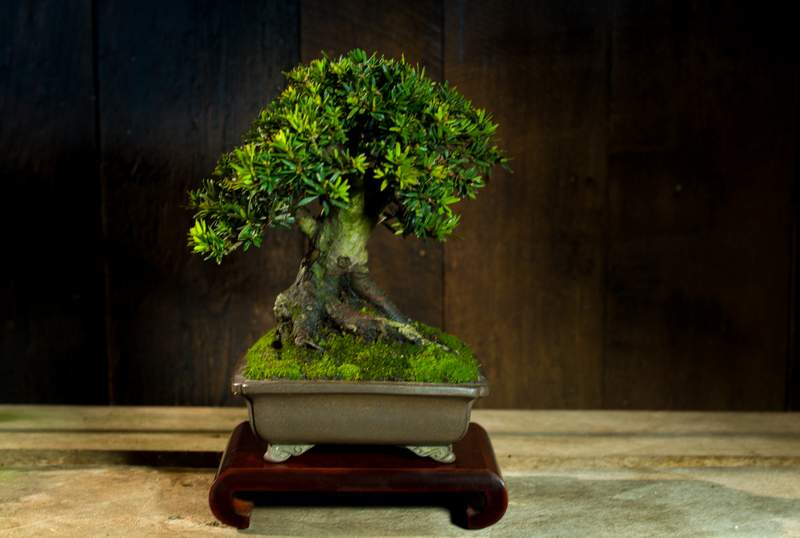
2017
The Yew, Taxus baccata, has reached a more mature stage. It still needs improvement and especially the right part has to grow.
Also spaces needs to be developed between the foliage parts. This will be the focus point for the next period.
Bark has matured well, and the surface roots (nebari) looks much older than it did ten years ago.
